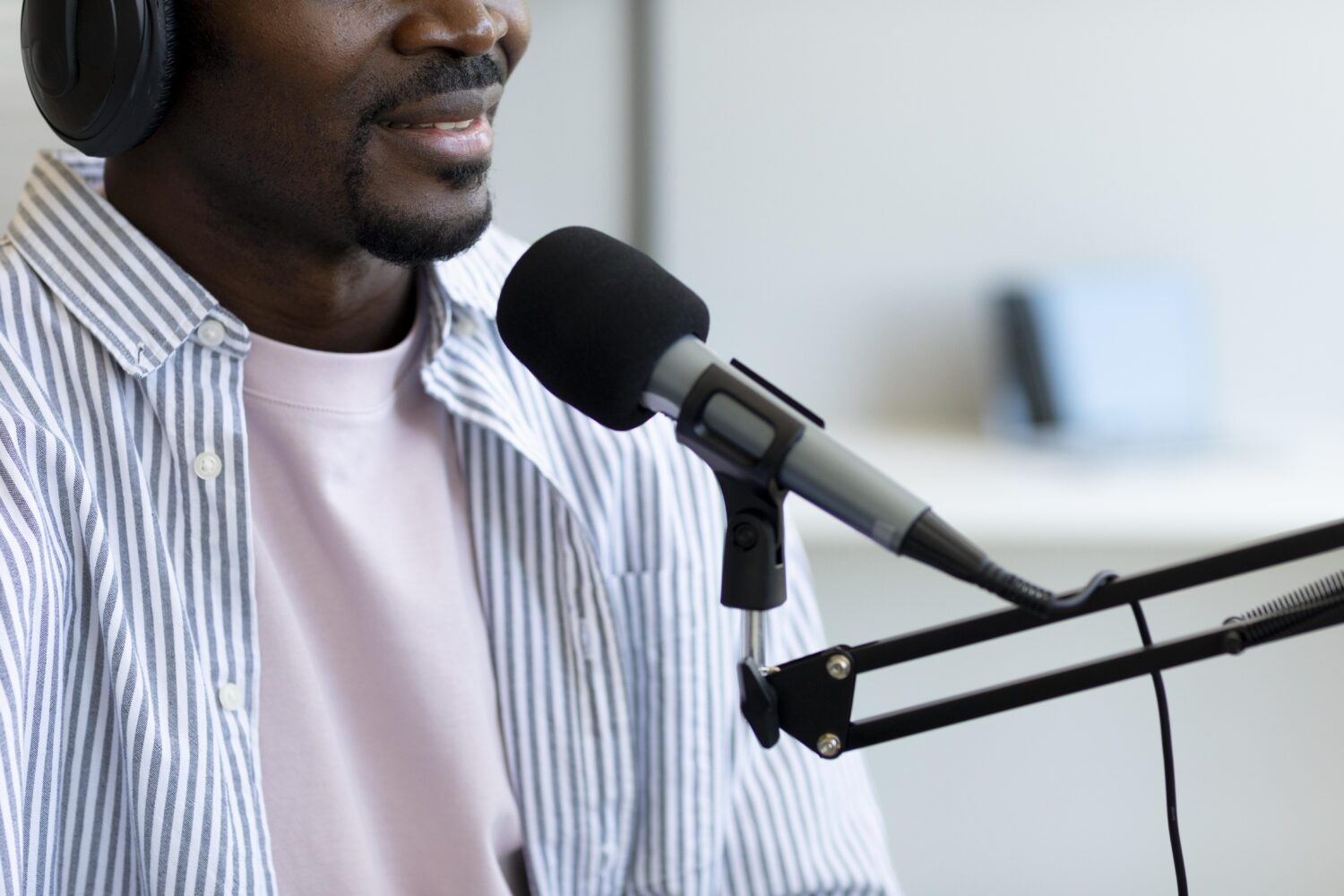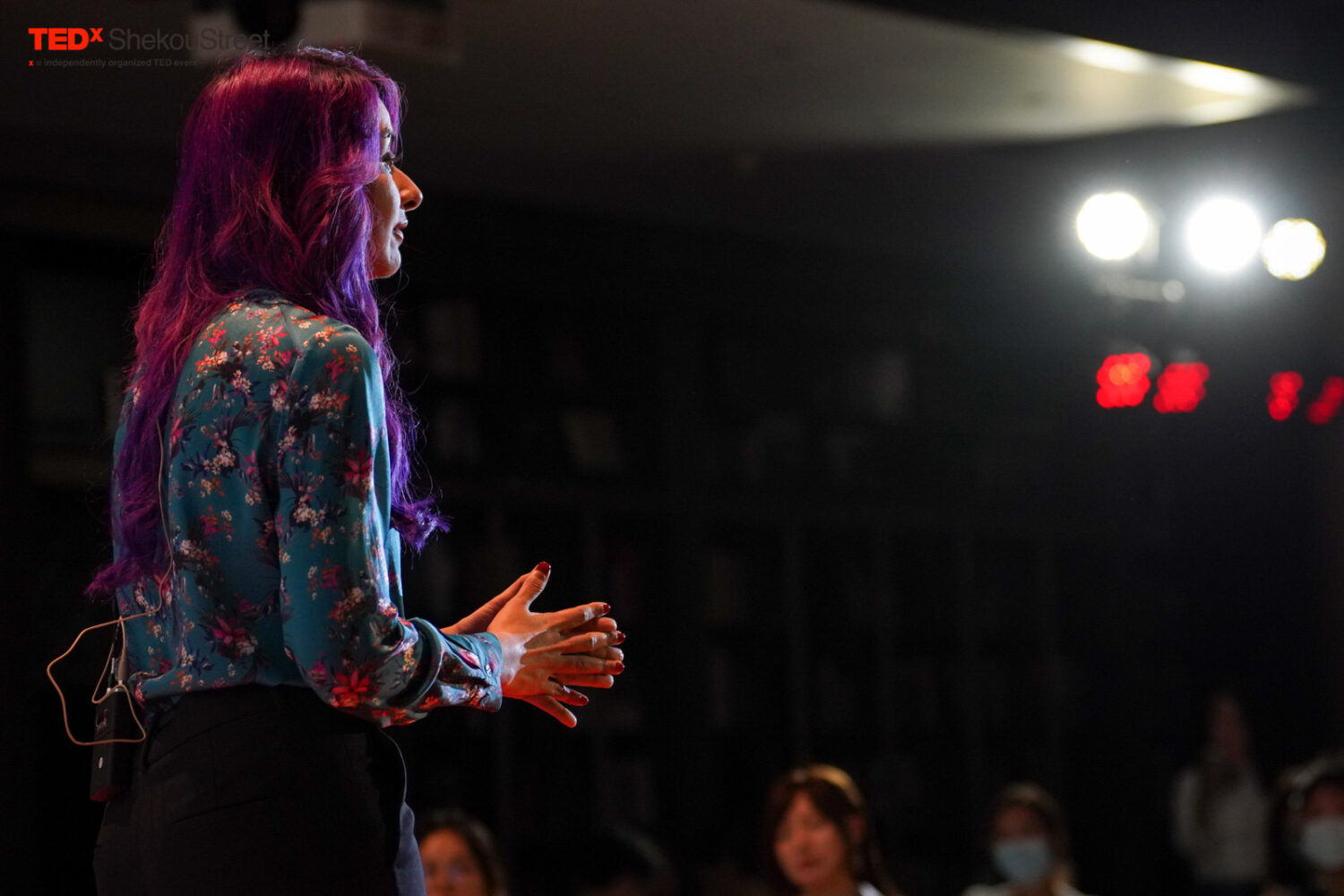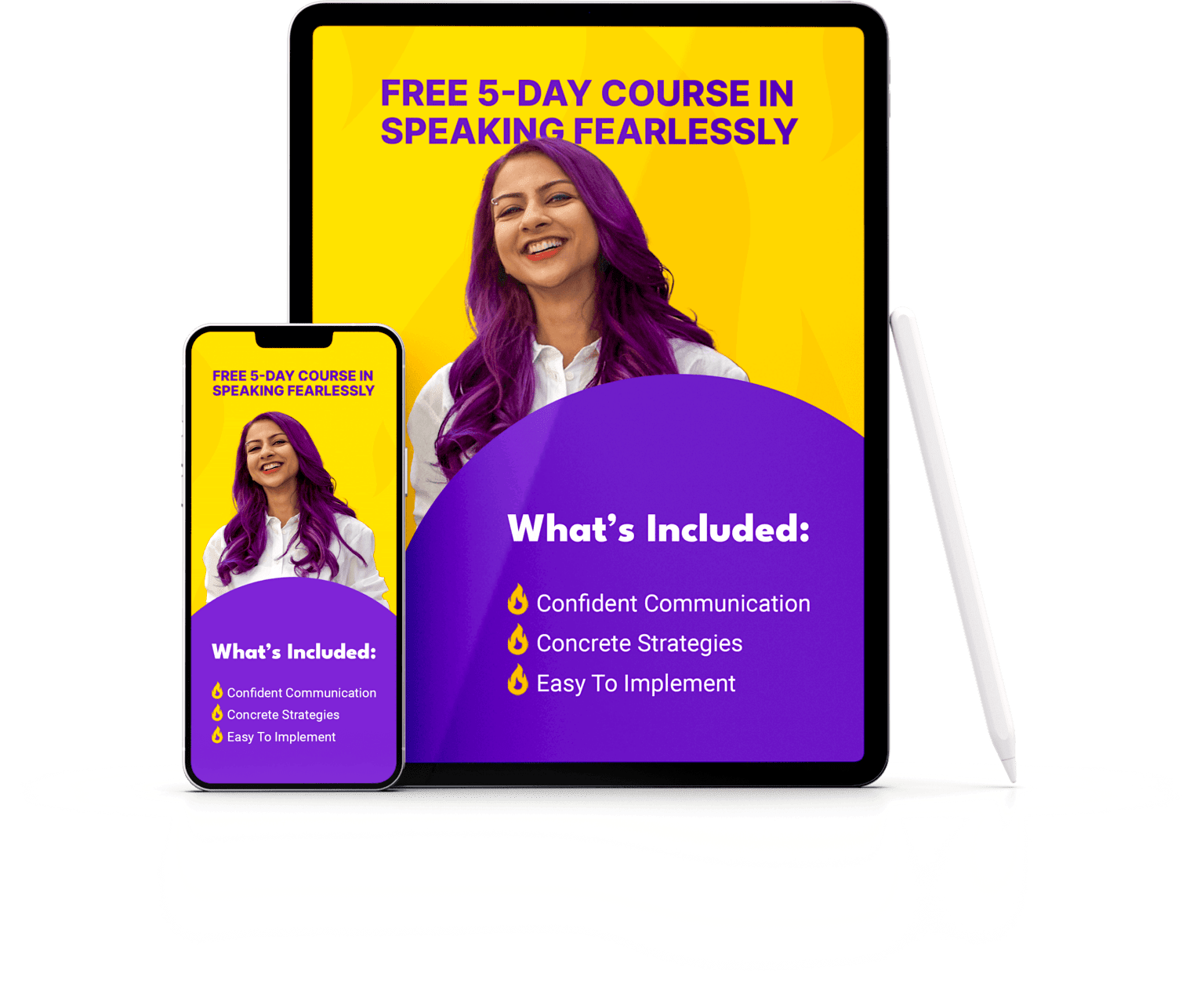When you’re in the spotlight and need to speak to an audience- you’re likely stressed. You might be feeling the nerves and the pressure to communicate effectively. This is where mindfulness emerges as a transformative and underutilized tool.
Whether you’re addressing a small team or speaking in front of a large audience, the fear of public speaking is very real (and very common). However, what if there was a practice that could not only alleviate the anxiety associated with public speaking but also enhance your overall performance and impact as a speaker? Mindfulness, a centuries-old practice rooted in contemplative traditions, has the power to transform painful self-consciousness into self-awareness when you speak in public.
In fact, the best speakers in the world cultivate their self-awareness in the moment when all eyes are on them – and they do this through using mindfulness.
In this comprehensive guide, we will explore its extraordinary power and share concrete examples of how it can significantly improve your public speaking skills.
Table of Contents
1. Understanding Mindfulness
Mindfulness is the practice of being fully present and engaged in the moment, without judgment.

Me on the TEDx stage in 2022.
Those three segments of the definition are vital:
Being fully present involves intentionally leaving behind other worries and demands on our time. It means silencing that phone. It means making a decision to not check emails and notifications. And perhaps more than anything else, it means mentally clearing space by making an effort to distance yourself from distracting thoughts.
Being fully engaged means making an effort to not let your thoughts wander. And intentionally pausing negative or critical thoughts. (Easier said than done for sure, but entirely possible based on my experience and the experience of my clients).
Showing up without judgment means not evaluating yourself or your performance. This is crucial for public speaking – if you want to perform well when you’re speaking to an audience, you have to fully commit to the moment and leave the critical voices in your head behind. We’ll dive into exactly how to do this a bit later in this article.
Mindfulness starts with paying attention to your thoughts, emotions, bodily sensations, and the surrounding environment. Mindfulness is not about eliminating stress or anxiety; rather, it’s about acknowledging and observing them without reacting.
The Science of Mindfulness and Stress Reduction
Research has shown that mindfulness can reduce stress and anxiety.
In research studies, people who have gone through mindfulness-based therapy were better able to focus on the present moment, and were less likely to worry and to think about a negative thought or experience over and over.
This is crucial for public speakers who often experience pre-presentation nerves. Most of us start worrying – or even obsessing – over what will happen when we’re on stage. People start anticipating the worst-case scenario, and that adds to their anxiety.

Photo by Brett Jordan on Unsplash
In contrast, with mindfulness techniques, you feel more in control in the present moment – and are able to not just be present and aware but also deliver in the moment without judgment and with less anxiety.
2. The Benefits of Mindfulness
Cultivating your Presence: Navigating Fear and Anxiety
Fear and anxiety are common emotions before a public speaking engagement. Mindfulness can help you observe these emotions without getting overwhelmed. Treat these negative emotions as data, instead of a larger-than-life phenomenon that has control over you.
By acknowledging your fear and anxiety, you can navigate them more effectively. You take away the control they have on you and claim back your autonomy in the face of these emotions. Your mindful presence can have a major impact on how relaxed you feel and how much of yourself you bring to the table (or the stage).

Enhancing Your Connection with the Audience
Mindfulness improves your ability to connect with your audience.
Too many speakers appear to be distracted by their own message, or their own self-consciousness. You can spot these speakers by how they seem to be presenting at and to themselves. The audience may or may not be there.
Ouch. No one likes feeling like they may as well not be there.

Photo by Memento Media on Unsplash
On the other hand – when you’re fully present, you’re in a better position to practice active listening and observe your audience in the moment. Being more present and aware also enables you to respond authentically to the audience. This deepens the connection between you and your listeners.
When the audience finds that you’re being mindful of your own presence and of their reactions, they will become more engaged in what you have to say.
Mindful Speech: Clarity and Impact
Mindfulness can enhance the clarity and impact of your speech.
By speaking mindfully, you can choose your words more carefully, enunciate every word, modulate your tone, and convey your message with greater precision.
I’ll let you in on a secret – when you enunciate well, you’re signaling to the audience that you have high confidence and are reliable. Mumbling and being unclear in your speech – even when you’re an expert in your field – undermines your credibility.
Overcoming the Fear of Silence
Public speakers often fear moments of silence. People think that the audience will get impatient if you pause too much.
On the contrary – well-timed and frequent pauses help the audience digest what you’ve said and you end up having a bigger impact as a result.
You’ll actually find two kinds of pauses that are useful – the first kind are functional and the second type – dramatic. Functional pauses signal the end of sentences, segments or the start of new points. They serve a functional purpose and can be mirrored by a point of punctuation. Dramatic pauses go a step further by introducing pauses to emphasize important points, create drama and curiosity.

Image by Freepik
Being mindful makes it easier to pause. It also makes it easier to pause more frequently without judging yourself or letting the negative voices keep us speaking non-stop.
You can use pauses mindfully, allowing your audience to absorb your message and giving yourself time to gather your thoughts.
Managing Q&A Sessions with Composure
During Q&A sessions, mindfulness can help you maintain composure.
Very often, you might get unanticipated questions, or tricky ones that you need to think over before responding.
That’s where you can use mindfulness to pause, reflect and respond. You can also use techniques like being more attentive to the question in the moment – increasing your chances of understanding the question fully before responding.
3. Mindfulness Exercises for Public Speakers
Mindfulness in Preparation and Rehearsal
Mindfulness starts with your preparation and rehearsal process – before even stepping on that stage. Here are 3 mindful exercises you can practice when you’re rehearsing or right before you need to be on stage or on camera.
The 5 senses exercise:
Start by noticing five things that you can see.
Wherever you are when you practice your presentation or talk – pick something you may not otherwise notice, like the shape of the tiles on the floor or the paint on the walls.
Now observe four things that you can feel.
Become more aware of four things you are physically feeling, like the texture of your clothes, the rise and fall of your chest as you breathe, the wind around you or the surface of the floor you’re standing or the chair you’re sitting on.
Next, notice three things you can hear.
Take a moment to listen, and make note of three things that you hear around you. This can be the hum of the office AC, someone speaking on a phone near you or the clicking of keys on a keyboard.
Almost done – now become aware of two things you can smell.
Start becoming aware of smells around you – that you may not notice usually. The smell of your moisturizer or deodorant, the smell of someone’s coffee, or the smell of the room itself.
Finally, notice one thing you can taste.
Focus on just one thing you can taste right now. It could be a sip of water or even the current taste in your mouth. You can chew a piece of gum or a jellybean too.

Photo by Kelly Sikkema on Unsplash
Visualization
A useful exercise when you practice your talk or presentation is to visualize the entire environment as you practice. This helps you prepare for the talk by familiarizing yourself with the space in your mind, as well as visualizing the audience listening to you.
Here are 3 things you can visualize as you practice:
- The space: imagine the room that you’ll be in
- The stage: imagine the type of stage or space you’ll speak in – it may not be a formal podium. It could be the head of the boardroom table in a conference room.
- The audience: imagine the faces of people in the audience looking at you and paying attention.
The 3 step mindfulness strategy:
Here are 3 things you can practice in succession to become more aware of yourself, your body and your thoughts. You can do this right before you need to start your meeting or presentation.
Step 1: Intentionally step out of your everyday “auto-pilot” mode to bring awareness to what you are doing, thinking, and sensing at this moment.
Focus on the thoughts that come up and acknowledge your feelings, but let them pass. You can think of your thoughts and feelings like waves or a bus – let it pass in front of you while acknowledging its presence. Your goal is to tune in to who you are and your current state.
Step 2: Bring awareness to breathing for six breaths at a time.
The goal is simple – focus attention on just one thing: your breath. Start becoming aware of the movement that your body makes with each breath – how your chest rises and falls, your stomach might push in and out and how your lungs expand and contract. Become aware of the pattern of your breath so that you can use it to anchor yourself.

Image by Freepik
Step 3: Now expand your awareness outward.
Allow this new awareness to expand out from your breath. First expand to your entire body – notice all the sensations you’re feeling, “feel” your limbs, aches, tightness or looseness.
And then keep expanding your awareness out beyond your body to the environment. Bring your attention to whatever is in front of you. Note colors, shapes, patterns, and textures around you. Be fully there, fully present in the moment, and fully present in your awareness of your surroundings.
Mindfulness on stage and in the spotlight
You can use several mindfulness exercises to improve your speaking skills when you’re in the spotlight and need to perform – some of these are shorter versions of the mindfulness exercises you did when you practiced.
These have been adapted to be shorter as you often don’t have enough time at the beginning or during your presentation to do full mindfulness exercises. But you can catch yourself and become more mindful and aware in the moment through these mini-exercises:
Breathing: Practicing focused breathing helps you gain control of your nerves, heartbeat and overall emotions when your nerves are heightened. Take a few minutes as you step on that stage to focus on your breath as it moves in and out of your body.
Attention: Pay attention to your surroundings as soon as you’re on that stage or on camera. Easier said than done – I know it’s a challenge to slow down and notice things when you’re overcome with stress and anxiety. Take the time to intentionally slow down your thoughts and experience your environment with all of your senses — touch, sound, sight, smell and taste. This cultivates a sense of self-awareness instead of self-consciousness.
Presence: Take a moment – especially at the start of your talk but also throughout your talk – to be fully present and aware. This means checking in with yourself, intentionally blocking out distractions and reminding yourself to be fully there, in the moment. You can also take a moment to acknowledge the audience – recognize that they are there, listening and paying attention.
Grounding: Plant your feet firmly on the ground. Feel the ground under your feet. Stop swaying or stepping randomly. Take a moment every so often during your presentation to feel grounded. You can also do this while sitting down – just feel the ground under your feet.
Pausing: Very often, we forget to pause as we speak. Build in intentional pauses throughout your talk or presentation to refocus, recenter and be fully present in case your thoughts are becoming too distracting

Embracing Mindful Listening
Mindfully listening to the audience is a crucial component of effective public speaking. It involves actively listening to your audience’s responses and adapting your tone, pacing, pauses, pitch, energy and body language accordingly. Being mindful, intentionally tuning in to the audience and being fully present enables you to tune in to them closely.
This creates a more engaging and immersive experience for both you and the audience. For example, if people seem to be tuning out, observe it and then quickly address it: “Am I going too slowly?” “Is there anything you’d like me to explain more of or less of?”
If you see people raising their hands, address it – either by letting them speak or letting them know you’re taking questions later. If you don’t see enough people turn on their cameras in a group call or presentation, observe it and then address it by asking them to do so, pointing out what the benefit of that might be.
Overcoming the Unexpected: Handling Technical Glitches
Technical glitches can be a public speaker’s nightmare. Mindfulness helps you stay calm in such situations. You can assess the issue mindfully, communicate it to your audience with poise, and proceed smoothly.
4. The Mindful Speaker’s Journey: A Continuous Path of Growth
Becoming a mindful speaker is a journey of continuous growth. Embrace the process, learn from each experience, and refine your mindfulness practice over time.
The key is to understand how you can elevate different aspects of your speaking with being more mindful – before your talk as well as during it.
By practicing mindfulness, you can not only reduce stress, enhance your connection with the audience, and speak with greater clarity and impact. You can change painful self-consciousness into constructive self-awareness. Mindfulness is a tool that can empower you to navigate fear, embrace the silence, and handle unexpected challenges as they come up in the moment with calmness and composure. It’s time to embrace mindfulness and transform the way you engage with your audience.
Want to become a more powerful speaker? Let’s talk.



